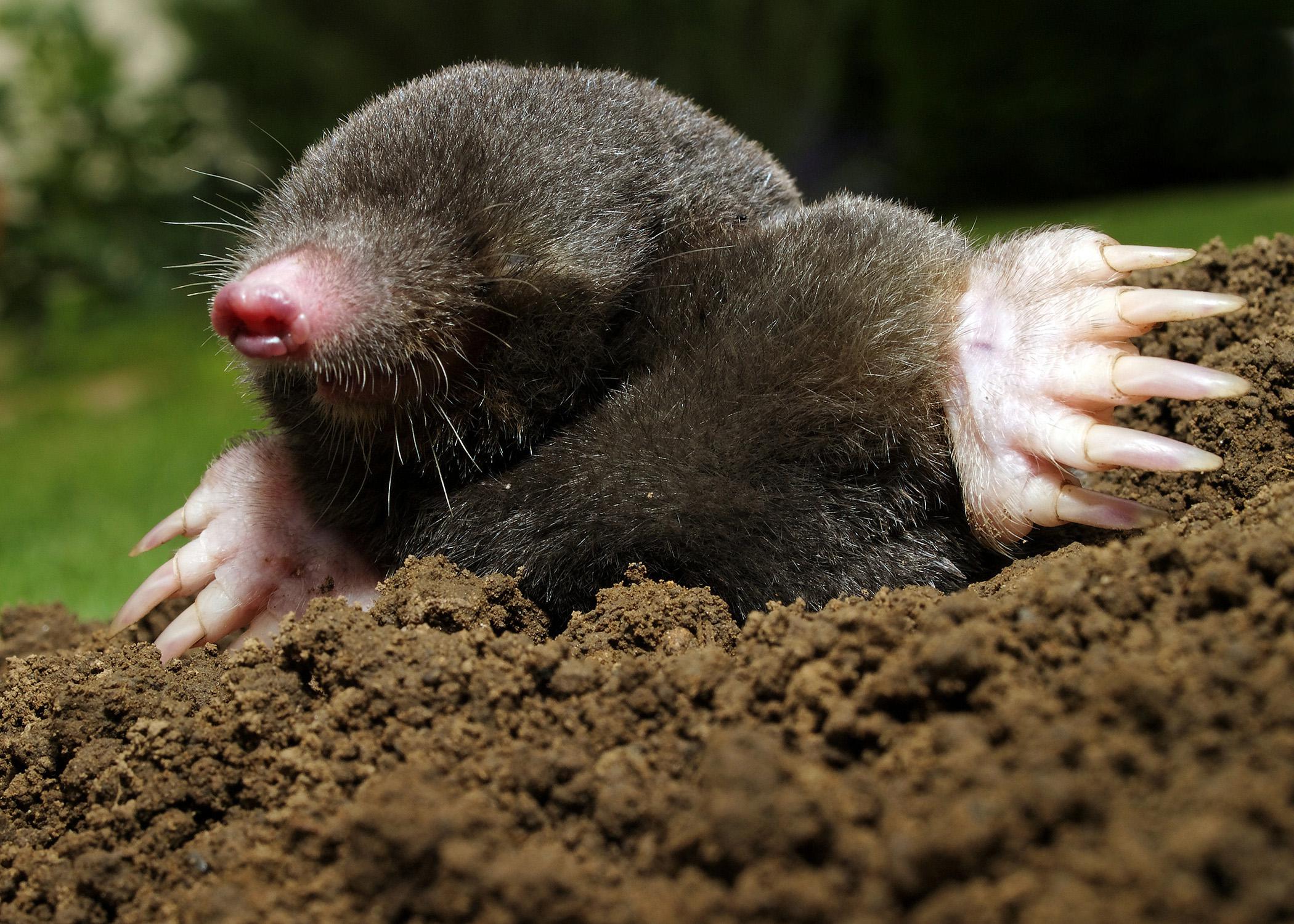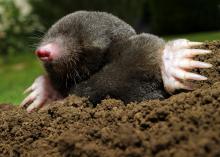Information Possibly Outdated
The information presented on this page was originally released on May 2, 2014. It may not be outdated, but please search our site for more current information. If you plan to quote or reference this information in a publication, please check with the Extension specialist or author before proceeding.
How to rid your lawn of mountains of molehills
MISSISSIPPI STATE -- You hardly ever see them, but their small, cylindrical bodies can wreak havoc on your lawn. Each year, Mississippi homeowners spend countless hours and hundreds or thousands of dollars attempting to rid their yards of these solitary insectivores.
The inviting, safe environment of residential lawns and gardens may create an annual mole problem. Understanding mole behavior, trapping early and vigilantly, and modifying landscapes to discourage digging will mean less time dealing with moles and more time enjoying your backyard.
So what exactly is a mole? Why do they seem to return each year? And can homeowners ever eradicate these powerful diggers?
Although from a distance moles have a mouse-like appearance, moles are not rodents. They are more closely related to shrews and bats.
Moles can range from 5 to 7 inches long. They weigh just 5 or 6 ounces. Moles have pointed, hairless snouts, no external ears and large, paddle-like claws for digging. Moles have very poor eyesight and rely on their sense of touch and smell to feed on bugs and larvae.
Moles are solitary creatures, so although you may see an extensive network of mole tunnels and hills in your yard, chances are there are no more than two moles creating that lumpy patchwork of dirt mounds and raised burrows.
Moles are designed for digging and can dig with a force 32 times their body weight -- sometimes creating tunnels at a rate of 18 feet per hour! They can then travel through these tunnels at up to 80 feet per minute.
They make surface tunnels for feeding and deeper tunnels to join the feeding tunnels. These deeper tunnels have characteristic mounds of soil at the end. The mounding is a sign you have moles instead of voles, which are true rodents that eat plant roots and other vegetation.
Despite the misconception that moles eat plant bulbs and roots, moles are actually ravenous insect eaters. They cause collateral damage to plant roots in their quest for bugs, worms, grubs and other larvae, eating between 70 and 100 percent of their body weight each day.
Loose, soft and wet Mississippi soil attracts a buffet of insects for moles. Your backyard is also a safe haven for moles because it is virtually free from the natural predators in the moles’ native woodland habitats.
Moles are an especially frustrating pest to remove. To find the areas of most recent mole activity, stomp down a few raised tunnels and observe which ones are pushed back up within the next 24 hours.
Once you’ve determined where the moles live, you may be tempted to try one of the numerous, age-old home remedies for ridding your lawn of moles: razor blades, human hair, chewing gum, moth balls and castor oil are just a few. These remedies simply don’t work and could actually cause more harm to your lawn than good.
Poisons are ineffective and even counterproductive. The chemicals could seep into your soil, kill vegetation or even harm your pets. Save your money and avoid “peanut” or “gummy worm” poison-coated baits; moles do not possess the lower incisors needed to gnaw on them.
Vibration devices are as useless as baits. They have no scientific basis or evidence to show mole eradication.
The only tried and proven method for permanent removal of moles is lethal, underground trapping. There are a number of lethal traps to choose from, including scissor, harpoon and spear. Additional steps you can take include modifying your landscape by mulching your garden beds with loose stones or gravel instead of wood mulch. This will create a less hospitable habitat for insects and deter moles from digging.
In your lawn area, create areas of stone paving and reduce the moisture in your soil. Also, consider treating your lawn for grubs and other pests that serve as a food source for the moles.
If you’re really desperate, call a wildlife or animal removal specialist who will professionally assess your problem, locate the active mole tunnel, set the trap and remove the carcass. For more information on moles and mole trapping techniques, visit http://icwdm.org/handbook/mammals/moles.asp.
As a last resort, you could learn to make peace with your mole residents and understand their benefit to the lawn -- a typical mole eats 45 to 50 pounds of insects each year, and its feces puts nutrients back into the soil.

Editor’s Note: Extension Outdoors is a column authored by several different experts in the Mississippi State University Extension Service.






